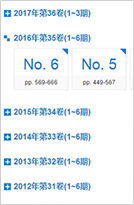2021, 13(3): 95-100. doi: 10.16670/j.cnki.cn11-5823/tu.2021.03.14
钢结构加工图引出标注布局算法研究
| 1. | 同济大学 土木工程学院,上海 200092 |
| 2. | 上海同磊土木工程技术有限公司,上海 200433 |
The Study on Label Placement Algorithm for Element Drawings of Steel Structure
| 1. | College of Civil Engineering, Tongji University, Shanghai 200092, China |
| 2. | Shanghai Tonglei Civil Engineering Technology Co., Ltd., Shanghai 200433, China |
引用本文:
舒沈睿, 张其林, 满延磊. 钢结构加工图引出标注布局算法研究[J]. 土木建筑工程信息技术,
2021, 13(3): 95-100.
doi: 10.16670/j.cnki.cn11-5823/tu.2021.03.14

Citation:
Shenrui Shu, Qilin Zhang, Yanlei Man. The Study on Label Placement Algorithm for Element Drawings of Steel Structure[J]. Journal of Information Technologyin Civil Engineering and Architecture,
2021, 13(3): 95-100.
doi: 10.16670/j.cnki.cn11-5823/tu.2021.03.14

摘要:针对现有钢结构加工图引出标注布局算法中引出标注干涉冲突严重及不美观的问题,引入聚类法与二分图带权最优匹配,提出了一种基于边界标注布局形式的钢结构加工图引出标注布局算法。该算法将布局目标分解为三个子目标,按照引出标注的空间聚集特征将加工图划分为若干子范围。在每个标注子范围内,对子目标采用递归、二分图带权最优匹配等方法依次求解。经测试,该算法可有效避免标注重叠严重的问题,执行效率高,具有很高的美观性与实用性。
Abstract: A label placement algorithm using clustering and bipartite graph maximum-weighted matching method is put forward to solve the serious label overlapping problem that the present algorithms cannot perfectly deal with in element drawings of steel structure. This algorithm divides the placement target into 3 sub-targets as well as divides the whole element drawing into several sub-regions according to their gathering characteristics. For each sub-region, each sub-target can be solved in sequence by recursion and bipartite graph maximum-weighted matching method. The test result shows that the algorithm can effectively avoid the serious overlapping problem of labels with high execution performance and high usability.
| [1] |
贺明玄, 沈峰. BIM技术在建筑钢结构制作中的应用[C]//钢结构技术与工程应用最新进展——2014中国建筑金属结构协会钢结构分会年会和建筑钢结构专家委员会学术年会论文集. |
| [2] |
刘颖滨. 钢结构节点详图自动标注的研究与实现[D]. 中国科学院计算技术研究所, 2000. |
| [3] |
Li Y, Pardalos P M, Resende M G C. A greedy randomized adaptive search procedure for the quadratic assignment problem[J]. Dimacs, 1994, 16(4): 237-261. |
| [4] |
Christensen J, Marks J, Shieber S. An empirical study of algorithms for point-feature label placement[J]. Acm Transactions on Graphics, 1995, 14(3): 203-232.doi: 10.1145/212332.212334 |
| [5] |
Bekos M A, Kaufmann M, Symvonis A, et al. Boundary Labeling: Models and Efficient Algorithms for Rectangular Maps[C]//International Symposium on Graph Drawing. Elsevier B.V. 2005. |
| [6] |
Lhuillier A, Van Garderen M, Weiskopf D. Density-based label placement[J]. The Visual Computer, 2019, 35(6-8): 1041-1052.doi: 10.1007/s00371-019-01686-7 |
| [7] |
Kakoulis K G, Tollis I G. Algorithms for the multiple label placement problem[J]. Computational Geometry, 2006, 35(3): 143-161.doi: 10.1016/j.comgeo.2006.03.005 |
| [8] |
王福胜, 沈建新. 二维装配图零部件序号标注智能布局方法[J]. 图学学报, 2015, 36(01): 139-142.doi: 10.3969/j.issn.2095-302X.2015.01.024 |
| [9] |
巴克利. 图论简明教程[M]. 清华大学出版社, 2005. |
| [10] |
Zhu H, Liu D, Zhang S, et al. Solving the Many to Many assignment problem by improving the Kuhn-Munkres algorithm with backtracking[J]. Theoretical Computer Science, 2016. |
计量
- PDF下载量(38)
- 文章访问量(2544)
- HTML全文浏览量(1257)















